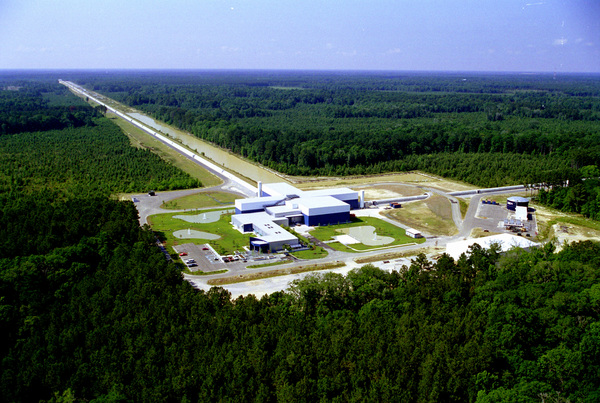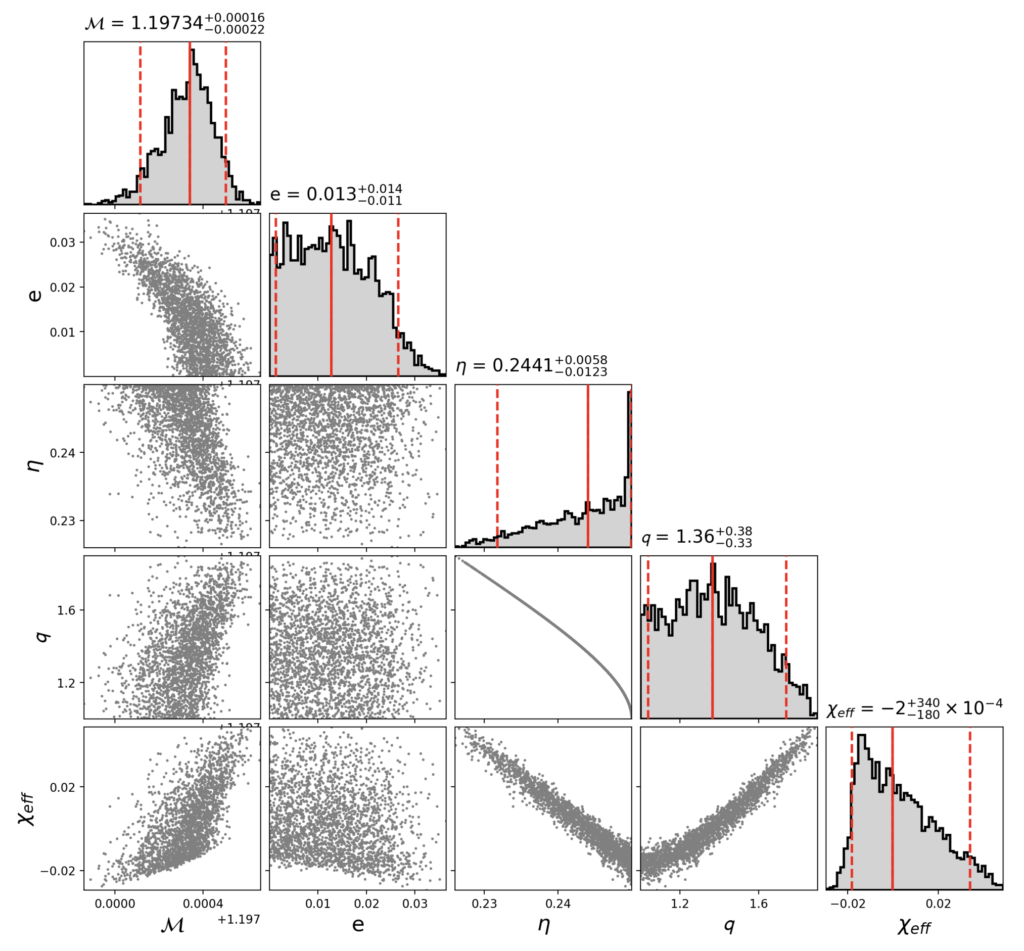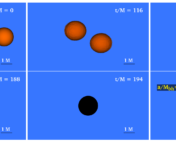Title: Measuring the eccentricity of GW170817 and GW190425
Authors: Amber K. Lenon, Alexander H. Nitz, Duncan A. Brown
First Author’s Institution: Department of Physics, Syracuse University, Syracuse NY 13244, USA
Status: Submitted to MNRAS, open access on arXiv
On August 17, 2017 the Laser Interferometer Gravitational-Wave Observatory, or LIGO, in conjunction with VIRGO, detected gravitational waves from a pair of merging binary neutron stars for the first time. This detection was named GW170817, and ushered in a new era of multi-messenger astronomy, where light from all wavelengths, from gamma-rays to optical to radio from the resulting kilonova were detected from the same place on the sky where the merger occurred. Since then, LIGO and VIRGO have detected one other binary neutron star merger on April 25, 2019, named GW190425. This neutron star merger was not associated with any other electromagnetic radiation, but is only the second event ever detected.

From the gravitational wave signal of these mergers, we can determine many properties of the neutron star binary system, including how far away they are, how fast they’re spinning, and their masses. One assumption made when searching the gravitational wave data for neutron star mergers is that the binary orbit has a very low eccentricity, or is fairly circular, less than 0.05 . However, binary neutron stars can have highly elliptical orbits, with eccentricities up to 0.828. While it’s predicted that neutron star binaries will be in very circular orbits when they merge, it’s important to be able to measure how elliptical these systems are when they’re close to merging to determine how much this may affect the detectability of future neutron star merger gravitational wave signals. This has led the authors of this paper to measure the eccentricity of the two detected neutron star merger events, GW170817 and GW190425.
How to measure eccentricity from gravitational waves
To measure the eccentricity of these binary neutron star mergers, the authors take advantage of two statistical strategies. The first is Bayesian inference, which compares how much more likely it is for a certain model to fit the data over a different model. Here, the authors use this to determine how much more likely one set of binary model parameter values, including eccentricity, is as compared to another set. To test different sets of binary parameters, they use a method called Markov Chain Monte Carlo (also known as an MCMC) to randomly sample different sets of parameters over some predefined range of values (this is known as the prior). For each set of sampled parameters, they calculate how likely the new set is over a previous set using the Bayesian inference. If the new set of parameters is more likely, they record them. Then they test another set, against the one just recorded in a similar manner, and continue in this way until they have a distribution of “accepted” or more likely parameters (this is known as the posterior).
Once they have a posterior set of values, the authors use the median value of their distribution for each parameter to determine the most likely value (see Figure 2). One thing the authors note is that as the binary neutron stars spiral inwards, the eccentricity of the orbit will change, so the value of eccentricity that they measure is when the binary neutron stars have an orbital frequency of 10 Hz, or 10 full orbits per second.

So just how eccentric are these mergers?
Using these measurement techniques the authors find that GW170817 has an eccentricity of 0.012+0.013-0.012 and GW190425 has an eccentricity of 0.025+0.022-0.025. These values are consistent with a low eccentricity or circular orbit, but the authors note that this is not surprising, since these events were first detected using a search that assumed they were circular. They also compare their results to a similar study and find that the results agree, but that their values are larger than those from the previous study.
This is due to one of the main results of this paper, which shows a clear degeneracy between the eccentricity and the chirp mass, a measurement dependent on the masses of both neutron stars, in the parameter search. This can be seen clearly in the second panel from the top in the first column of Figure 2, which shows that if the chirp mass is lower, the eccentricity must be higher to fit the model gravitational wave to the data.
Informing future binary neutron star mergers
The authors of this paper are able to confirm that both GW170817 and GW190425 have fairly circular orbits while putting together an important framework for measuring the eccentricity of binary neutron star mergers in the future. They show not only that the degeneracy between eccentricity and chirp mass is important for future measurements, but also that better modeling is required to detect possibly eccentric binary neutron star mergers in the future. We don’t know what kinds of systems will be detected by LIGO and VIRGO in the future, but we do know that searches for these eccentric systems are in good hands.
A note to our readers: Astrobites will be participating in #ShutDownSTEM/#ShutDownAcademia on Wednesday June 10th. This day is a way for our non-Black members and readers to stop doing science and instead learn about, reflect, and act on issues of racism and anti-Blackness in our communities (including/especially our academic communities), and for our Black members and readers to use to do whatever is most fulfilling for them. You can find more information and resources on #ShutDownSTEM on their website, the Particles for Justice #Strike4BlackLives website, as well additional resources in this astrobite.



